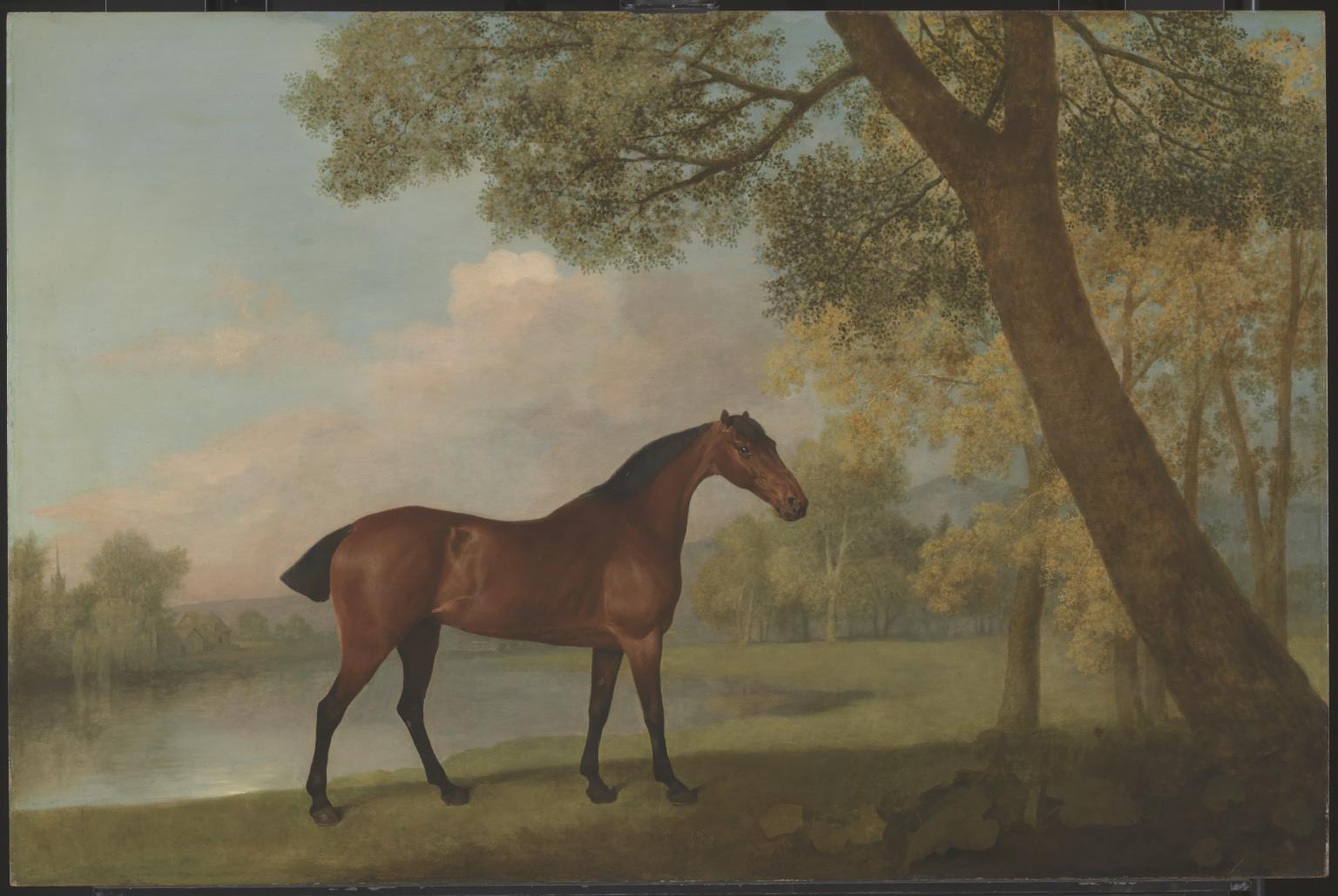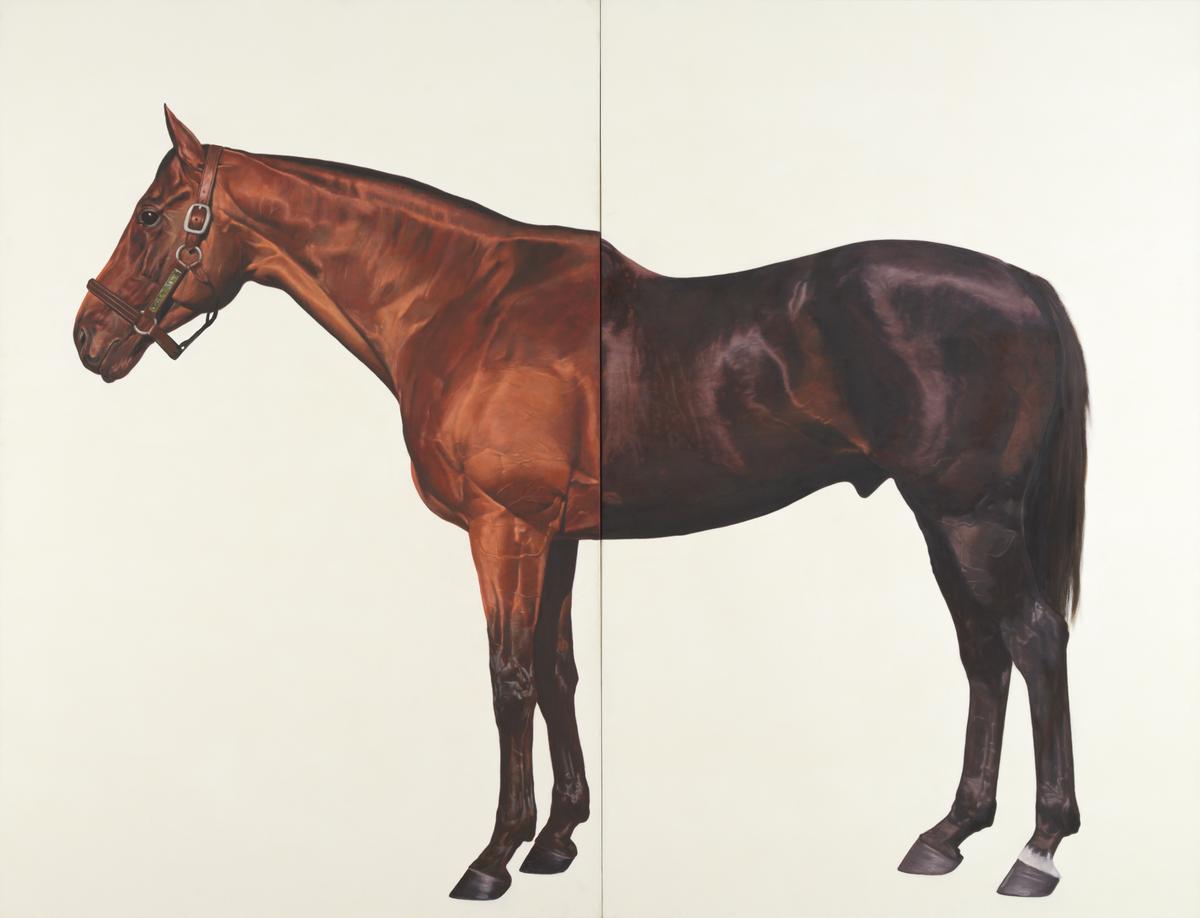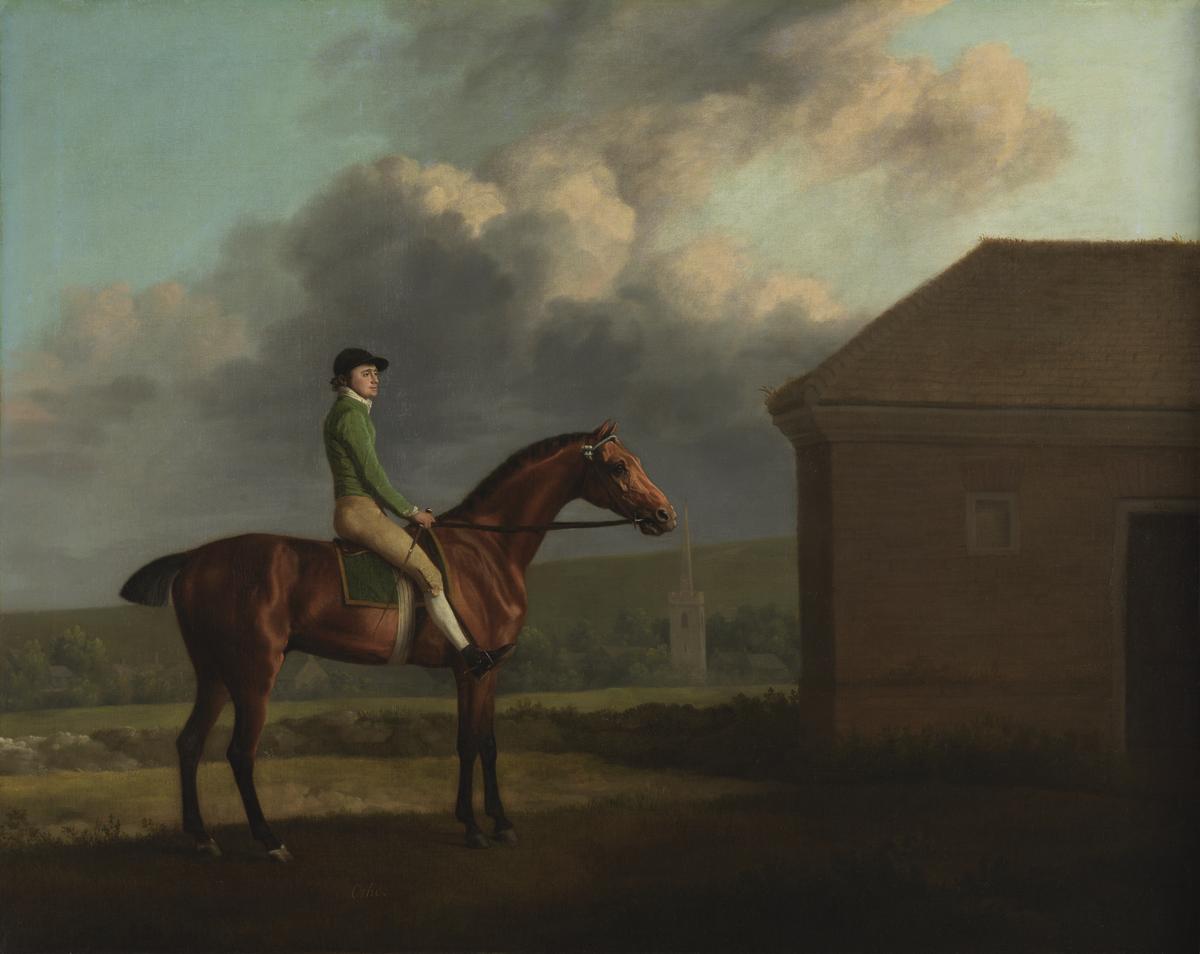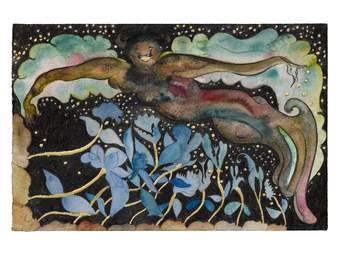Chris Ofili has selected a number of his own watercolours and sketches that resonate with the works of William Blake
‘I first came across William Blake’s work at the Tate Gallery around the time I began studying art in 1987, whilst I was living in Manchester. I was drawn in by the beautiful line and gentle use of colour, and by how the figures, the landscape and the symbolism all metamorphose fluidly into each other.’
Ofili freely mixes influences from diverse sources to create works that are partly figurative and partly abstract. European art history is combined with African American and Black British popular culture, while Biblical stories flow into Caribbean folklore and Greek myths. Like the artworks of William Blake (on display next door), Ofili’s art is vibrant, symbolic, and frequently mysterious in nature. It plays on ideas of beauty while carrying messages about history and exoticism.
‘I’m always shocked by how imaginative Blake is, how free and open the work is, and how he’s describing this world in what appears to be a kind of fairytale world.’
Ofili became well known for his complex multi-layered paintings. His works were often made with a signature combination of resin, glitter, collage, and elephant dung. His more recent works adopt simple, pared-down forms while continuing to be just as expansive, dramatic, and romantic.
Born in Manchester in 1968, Chris Ofili currently lives and works in Trinidad.
Art in this room






